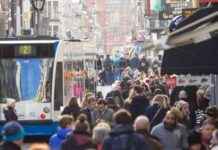Niels Destadsbader has been chosen as the new host of ‘Night of the Proms’ for the first time this year. He is the youngest presenter in the history of the concerts. Destadsbader will also perform during the event. In addition to him, international stars such as Shaggy, Eurythmics, and pianist Louis Philippson will be present on November 22, 23, and 24 at the Sportpaleis in Antwerp.
After well-known presenters like Carl Huybrechts and Kobe Ilsen, Niels Destadsbader is taking on the role of host for ‘Night of the Proms’ this year. Being the youngest presenter to receive this honor, he expressed his gratitude for the opportunity. Destadsbader shared, “As a child, I often went to Night of The Proms with my parents. And after all these years, it has become a household name, both locally and internationally. So being asked to host this edition as the youngest presenter ever is truly special. I can only be grateful for it.”
International stars will also grace the stage this year. Reggae sensation Shaggy, known for hits like ‘It Wasn’t Me’ and ‘Boombastic,’ will join the lineup in Antwerp. Grammy winner Shaggy has previously performed at the Sportpaleis for ‘Night of the Proms’ 20 years ago in 2004. Additionally, Dave Stewart, described as a “living legend” by the organizers, will be present. The British guitarist is famous for his work with the band Eurythmics, having sold over 100 million albums worldwide. He will be accompanied by singer Vanessa Amorosi to perform classics like ‘Sweet Dreams,’ ‘Here Comes the Rain Again,’ and ‘There Must Be an Angel.’
Adding to the lineup is Louis Philippson, a 19-year-old German pianist who rose to fame as a TikTok phenomenon, bringing classical music to a wide audience in a playful manner. Louis’s musical talent was discovered when he was just 7 years old, and he currently has over 700,000 followers on TikTok.
The 38th edition of ‘Night of the Proms’ is scheduled to take place on November 22, 23, and 24 this year. It promises to be a star-studded event with a mix of local and international talents, offering a memorable experience for all attendees.





















